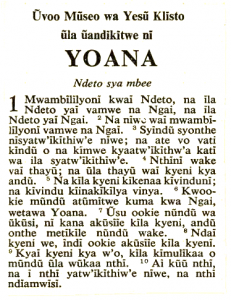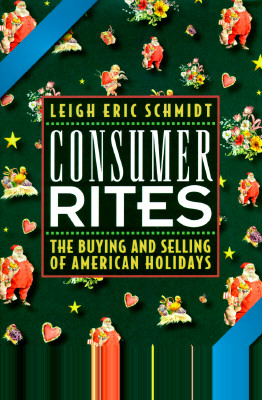One of the very important things I learned in the 4th grade was that you don’t mess with Sharon Osowski.
That lesson was learned one day in early 1972 at my elementary school in Elkhart, Indiana. On that particular afternoon, the weather was quite nasty and our class could not go outside for afternoon recess. But there was a problem. Our teacher, Mr. Bacon, had been counting on making an important phone call while we were out on the playground. What to do?
Mr. Bacon improvised. He told the girls that they were going stay in the room and the boys were going to go down to the gym to play dodgeball. I am pretty sure he reasoned, quite logically, that the girls were mature enough not to foment a revolution while unsupervised. And I am pretty sure he reasoned, quite logically, that the boys were immature enough that if they occupied themselves with a mindless game of running and throwing and catching and dodging, they would not figure out how to foment a revolution.

Ah, yes: the checkered texture, the bright red color, the little black rubber air hole, the faint smell of rubber: this is the stuff of 4th Grade Joy!
My reasoning was that the day had suddenly turned into something of a holiday. There was no greater gift that God could bestow upon us at school than that absolutely wonderful game of dodgeball. The joy was that much greater when the gift arrived unexpectedly. And so, we boys went down to the gym and had a great time.
After a while, Mr. Bacon came into the gym and directed us back to the classroom, ahead of him. We returned in a state of 4th-grade boyish bliss. But as we walked into the classroom we were puzzled by the general state of things. We found the room quiet and empty, completely devoid of girls. This was strange.
Then, as we walked to our tables to sit down, the door to the girls’ bathroom suddenly swung open. (Each classroom in this school had a boy’s and a girl’s bathroom connected to it.) Sharon Osowski came marching out, leading the entire class of girls. In a truly remarkable display of group discipline, the girls popped out from that small bathroom in single-file formation — there came Amy Peterson, Jodi Romberger, Karen Osowksi (Sharon’s twin sister), Mary Lovejoy, Cynthia Vaughn, and more — the whole female lot of them. They each had written slogans on notebook paper that rang with cries of injustice. Things like “Girls Can Play Dodgeball, too!” and “Boys shouldn’t have all the fun!” They had taped these to their rulers, which they held aloft, protest-style. And as they marched around the room, they chanted something like “Unfair to Girls! Unfair to Girls!”
It was a sight to behold.
Indeed, I was a bit amused at first. But as I took my seat at my table and watched the girls snake around the room, I became annoyed. It seemed to me like the girls were blaming the boys for this whole dodgeball situation. But what had I done? I only went down to the gym because Mr. Bacon told us to. It wasn’t my fault that the girls didn’t get to play dodgeball. To my way of reasoning, their protest seemed a bit unfair to us boys and, quite frankly, unduly confrontational. And as that protest line, led by Sharon Osowski, marched closer to my seat, something in me just snapped. I suddenly reached up and ripped the paper off of Sharon’s ruler.
This was a mistake.
It was a mistake for a number of reasons. 1) You don’t mess with Sharon Osowski. 2) I was sitting and she was standing, so she had the height advantage. 3) She held a dangerous weapon in her hand. 4) Mr. Bacon had just walked through the door, the instant before I snapped. He saw the entire violent episode, brief as it was.
Several things happened very quickly at that moment. Sharon Osowski, who knows how to use a ruler, immediately abandoned whatever principles of peaceful protest she had picked up from Martin Luther King, Jr. She swiftly turned her plowshare into a sword and brought it down on my head. For maximum effect, no doubt, she made sure that she did not lead with the flat side of the ruler, but with the edge with the metal strip. I am here to testify that it hurt.
Before I even had a chance to consider whether or not I wanted to tangle further with Sharon Osowski, Mr. Bacon took control of the room. Sensing that, despite his best efforts, the revolution had been fomented after all, he immediately ordered the girls to take their seats and, in no uncertain terms, told everyone to be quiet.

Don’t let the peaceful exterior fool you. Inside the walls of Mary L. Daly Elementary School, desperate 4th graders have struggled amidst a veritable maelstrom of social conflict.
He then turned his wrath upon the person most responsible for the social unrest he had witnessed. To my surprise, shock, and utter humiliation, that person was me. Now, I hated to get in trouble and I especially hated it when my getting-in-trouble happened publicly. But here, in front of the entire class, Mr. Bacon charged me with a whole list of crimes, which seemed to my fourth-grade mind to include assault & battery, vandalism, libel, and treason. He may have mentioned the First Amendment.
With the rebellion quashed, the room returned to its normal elementary school productiveness, which probably meant mathematics or spelling or geography. All I know is that my head hurt and I had been publicly humiliated. I was trying hard not to cry in front of the five other classmates at my table, because boys were not supposed to cry. As fate would have it, Sharon Osowski sat at my table. But in addition to being an impressive community organizer, Sharon Osowski was a mature fourth grade girl. And so, after a few minutes of listening to my sniffles, she apologized. “I’m sorry I hit you, Jay,” she whispered. “But you shouldn’t have ripped off my paper.”
In addition to being a disrupter of peaceful protests, I was an immature fourth grade boy. So I did not apologize, or say anything in return.
It was, actually, a significant moment in American history. I’m serious about this. I’ll explain why in my next post.
(Historian’s note: The above account is how I remember the event. I need to point out that historians are very aware that people commonly mis-remember some facts about events that took place long ago, so some of my details may not be fully accurate. However, I am quite sure that my joy for dodgeball, Mr. Bacon’s dilemma, Sharon Osowski’s sense of injustice, and my hurting head speak to the truth of what transpired on that fateful day).





